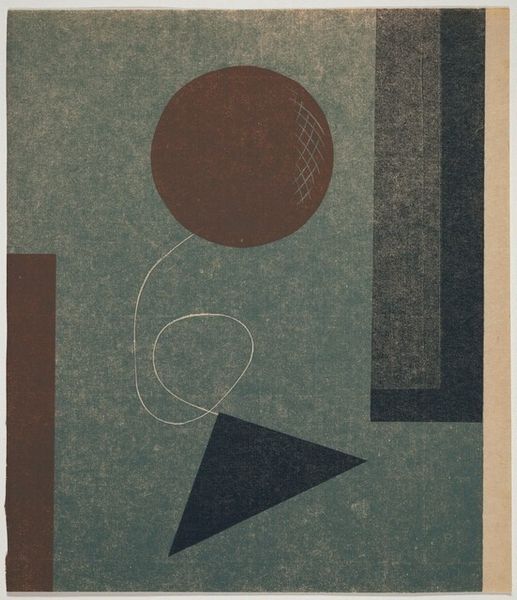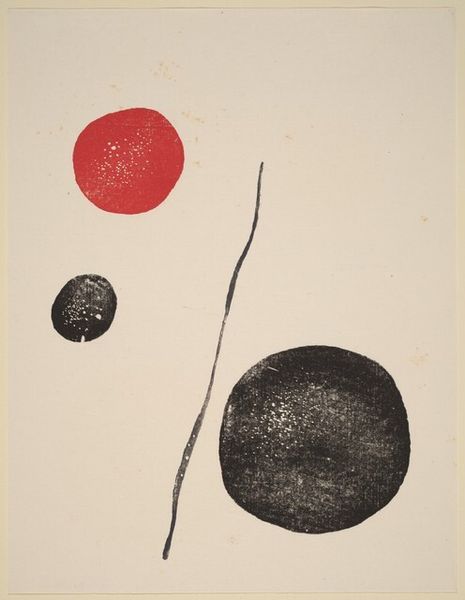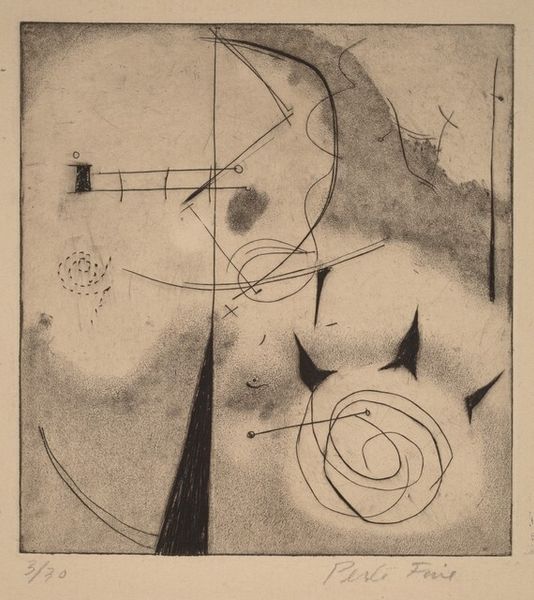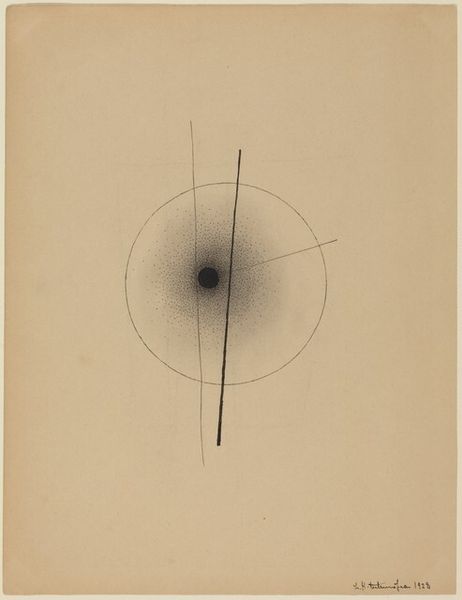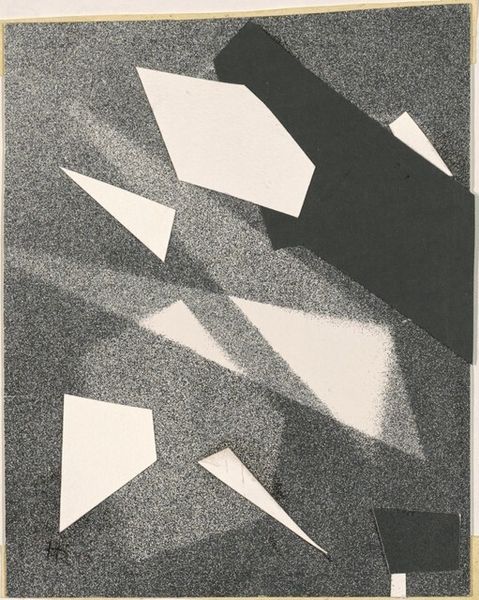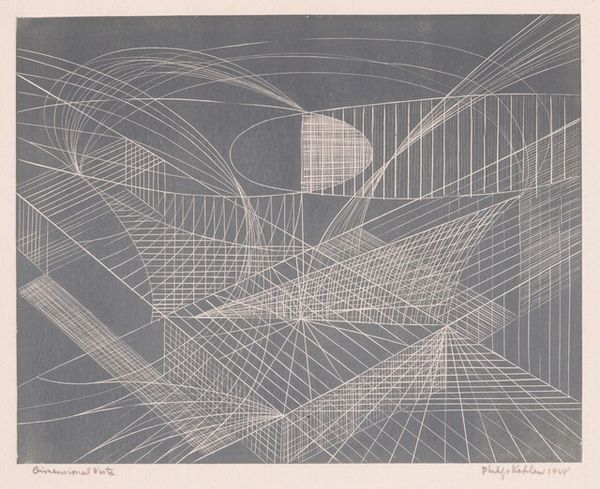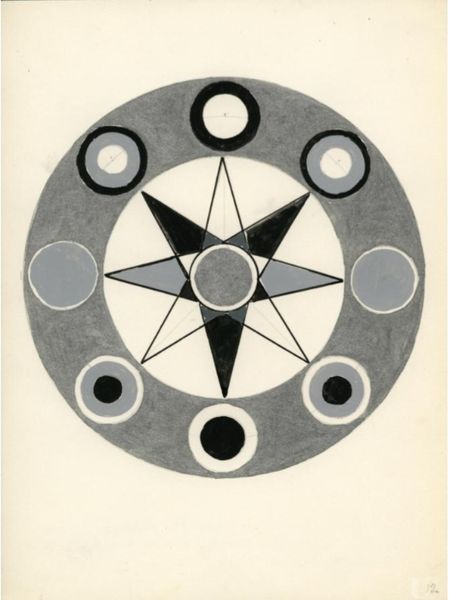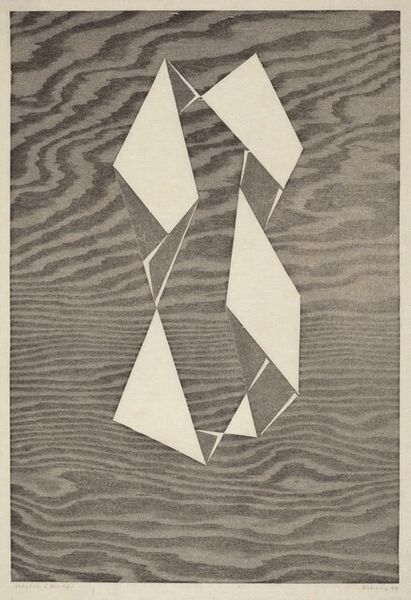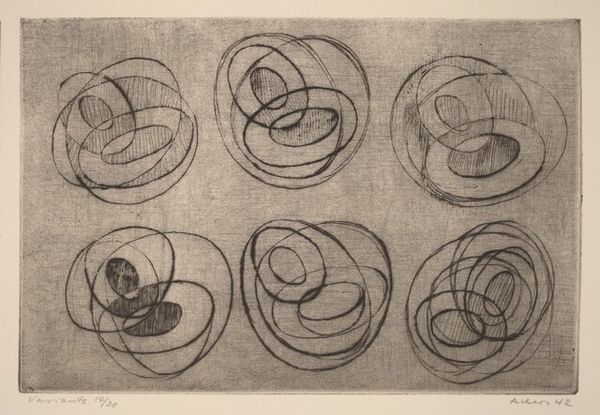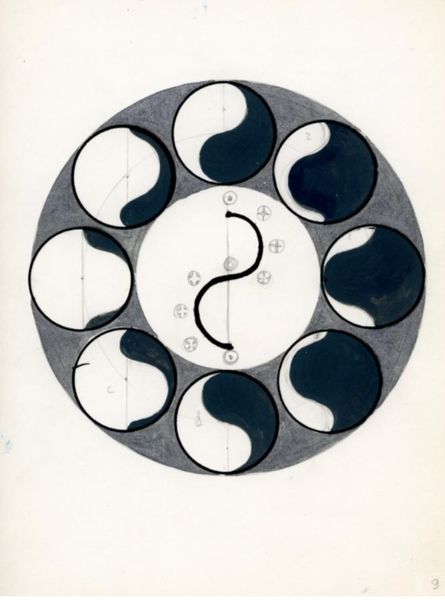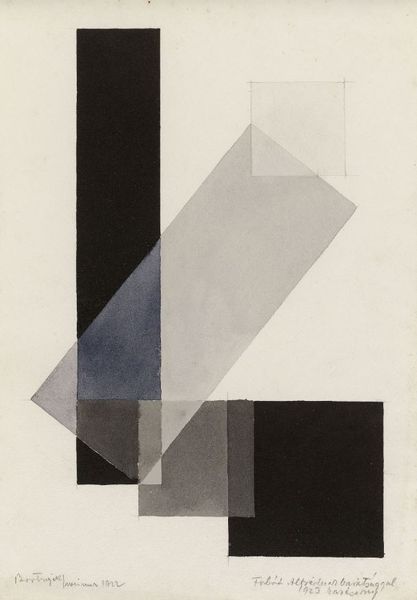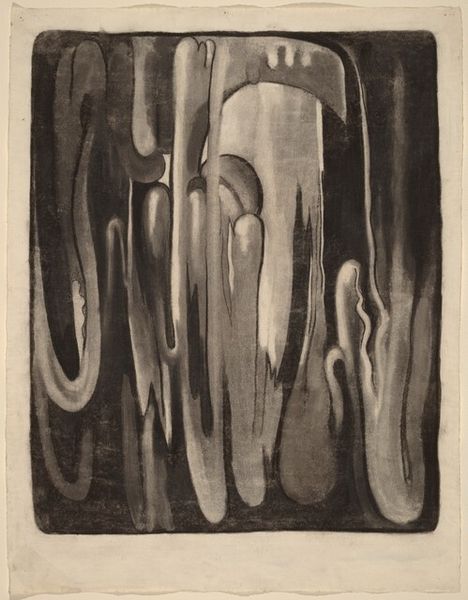
Copyright: Public Domain: Artvee
Editor: Here we have Paul Klee’s *Spiralschraubenblüten I*, created in 1932 using ink and watercolor on paper. The subdued monochrome palette and biomorphic shapes give it a very introspective mood. What do you see in this piece, beyond the initial impression? Curator: I see a work deeply engaged with the sociopolitical climate of its time, specifically the rise of fascism. The spiraling forms, reminiscent of cellular structures, can be interpreted as Klee's response to the increasing pressures for conformity and purity of race from the Nazi regime. Editor: So the biological shapes are metaphors? Curator: Precisely. Consider also that Klee was dismissed from his teaching position at the Dusseldorf Academy in 1933 by the Nazis. Therefore, the seeming abstraction holds the artist’s understanding of a society’s degradation. The "Spiralschraubenblüten" or Spiral Screw Flowers, could represent the twisting and manipulation of natural order under authoritarian rule. Do you think the title reinforces that idea? Editor: That adds a chilling layer of meaning, a distortion of something beautiful and natural. The choice of monochrome, too, could represent the stifling of individuality under a single, oppressive ideology. Curator: Exactly. By engaging with abstract forms, Klee creates a visual language that subtly critiques power and resists its erasure of complex identities. Editor: It’s amazing how much historical context shifts the way we perceive art. Curator: Absolutely, and by linking art history to current social and political issues, we see how historical artworks speak volumes in our modern experience.
Comments
No comments
Be the first to comment and join the conversation on the ultimate creative platform.
